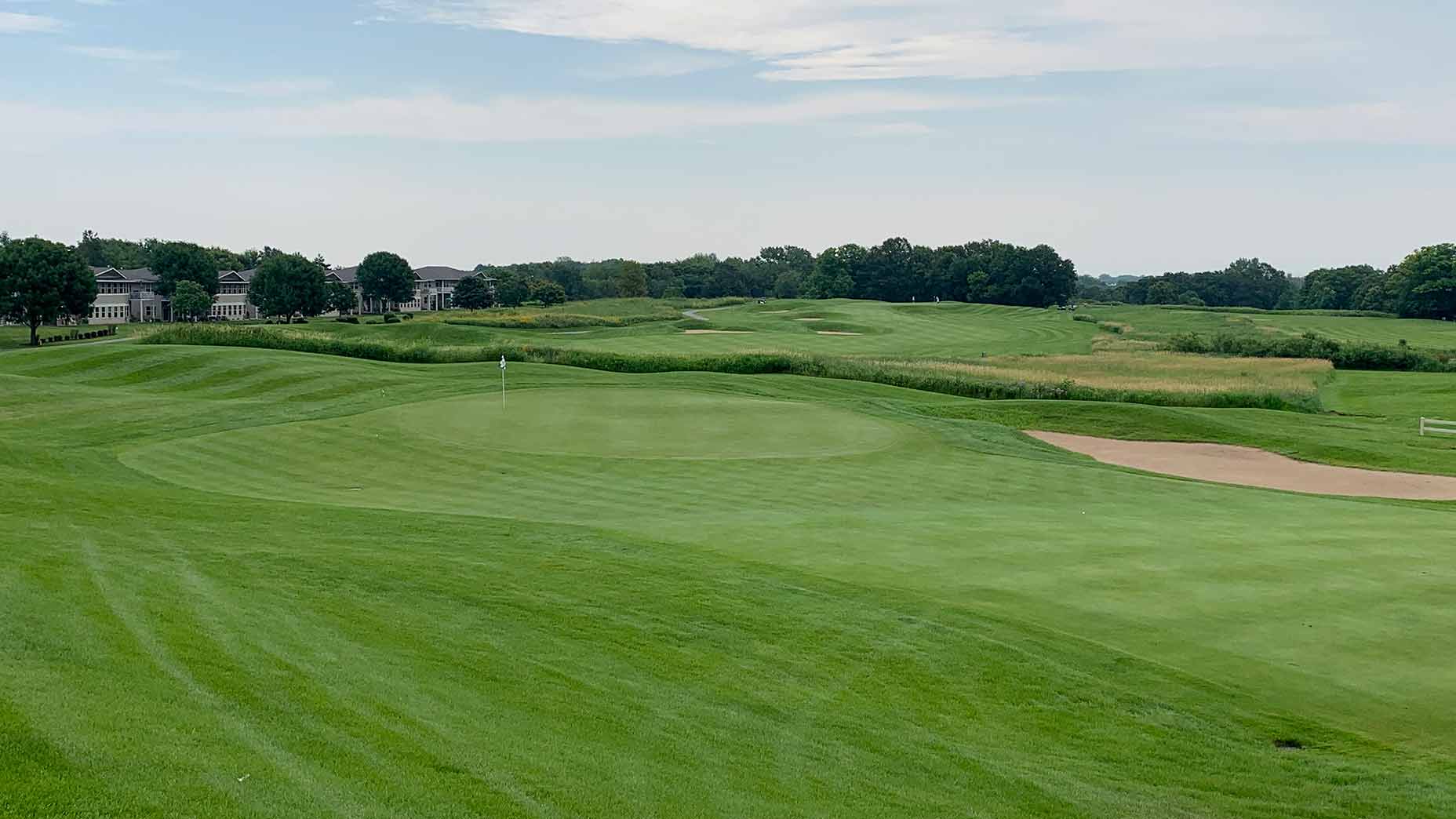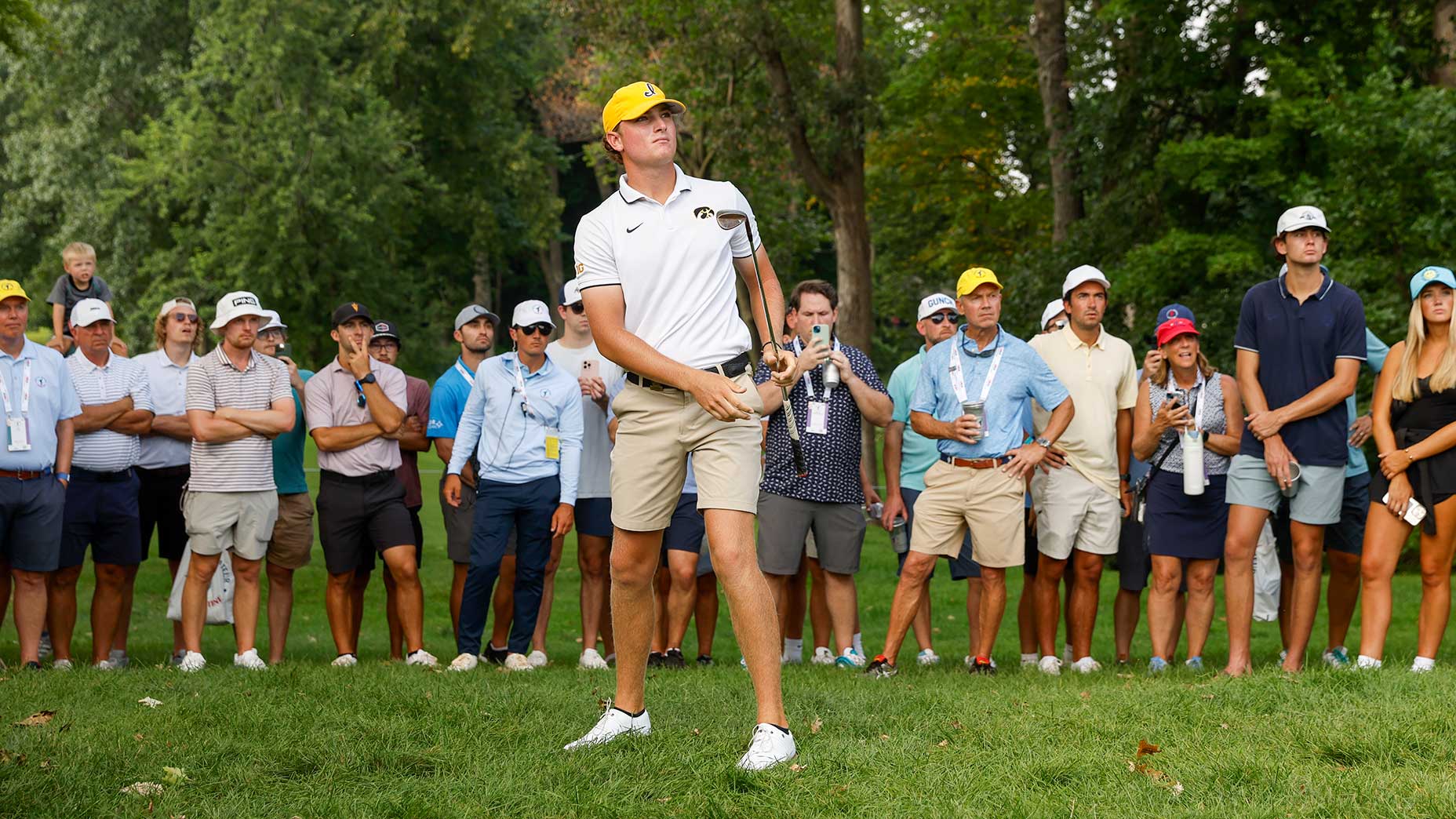The *other* U.S. Amateur course is a popular muni you need on your radar

The par-5 18th hole at Chaska Town Course in Chaska, Minn.
Josh Berhow
It was nearly 20 years ago when Billy Horschel shot a course-record 60 at Chaska Town Course, but the eight-time PGA Tour winner still remembers every shot.
“I got on 17 and I thought I needed to go birdie-eagle to shoot 59,” Horschel said last month while in Minnesota for the 3M Open. “I hit it to like 12-14 feet on No. 17, I lipped it out. On 18 I thought, OK, need to make albatross to have a chance.”
The 18th is a dogleg-left par-5 where marshland hugs the entire left side. Horschel tried to cut too much off the corner, pulled it and his ball landed above the hazard line and plunked off the bank into the water. He dropped, hit a mid-iron to about 25 feet and drained it for birdie.
Minutes later in the scoring area, Horschel was adamant he shot 61.
“And they’re like, ‘No, 60,'” Horschel said. “I’m like, No, I shot 61. Par’s 72. They’re like, ‘No, par’s 71.’ It was sort of a little more of a dagger because I thought par was 72 and I realized all I needed to do was make eagle on 18; I may have played a little bit more conservative on the drive.”

Horschel’s 60 at the 2006 U.S. Amateur — still the lowest score ever recorded in a USGA championship — is a story told often around Chaska Town Course, which was the stroke-play co-host with Hazeltine for that year’s U.S. Amateur. It’s likely to be spread even more this week, when the 2024 U.S. Amateur returns to the Hazeltine/Chaska combo for stroke play on Monday and Tuesday before match play begins on Wednesday at Hazeltine.
While a $30 ticket will get spectators through the gates at Hazeltine this week, it’s not as easy to snag a tee time at the private club that’s hosted PGA Championships and a Ryder Cup (with another coming in 2029). But the same can’t be said for Chaska Town Course, a muni that’s one of the top public golf courses in the Twin Cities and one of the best values ($82 peak walking) in the state.

The Arthur Hills design weaves through nearly 300 acres of marshland and open prairies and combines plenty of scoring opportunities with a touch of quirk. It passes the weekend golfer’s litmus test — some of the par-5s are reachable in two, a couple of the par-4s are near drivable and, best of all, there’s four good par-3s where you actually get to hit short irons (none of that hybrid business).
The first hole is wide open, and if you lose a ball off the tee it most certainly won’t be your day. The 3rd is a short par-4 with a pesky tree standing in the middle of the fairway and a green that’s pushed up against a pond. Some people dislike it (I’m not one of them).
The 5th is a split-fairway par-4 with water guarding the front of the green, the 6th a picturesque par-3 over a marsh and the 7th a par-5 that’s gettable in two if you can thread a needle with your second shot (and get a little help with the downslope on your drive).

The par-4 11th is the No. 4 handicap hole but might be considered the hardest by regulars (and the most annoying, by others). A fairway that narrows in front of a pond will prevent the biggest hitters from pulling driver off the tee, and even a good drive still leaves a long iron into the green.
The 13th is a semi-blind drive over the marsh on a dogleg par-4, and the 15th is a par-5 you will almost certainly like more (and play better) the second time around. On 16, you blast away from the tee on the final short 4, and on 17 you try to hit two long, straight shots (and don’t go left). On 18, the signature finisher, definitely don’t go left.
You won’t shoot 60 here like Horschel did; his feat (and ball) are likely safe at the USGA Museum in Pinehurst, N.C. But you can play a very fun golf course for a few bucks more than that.










